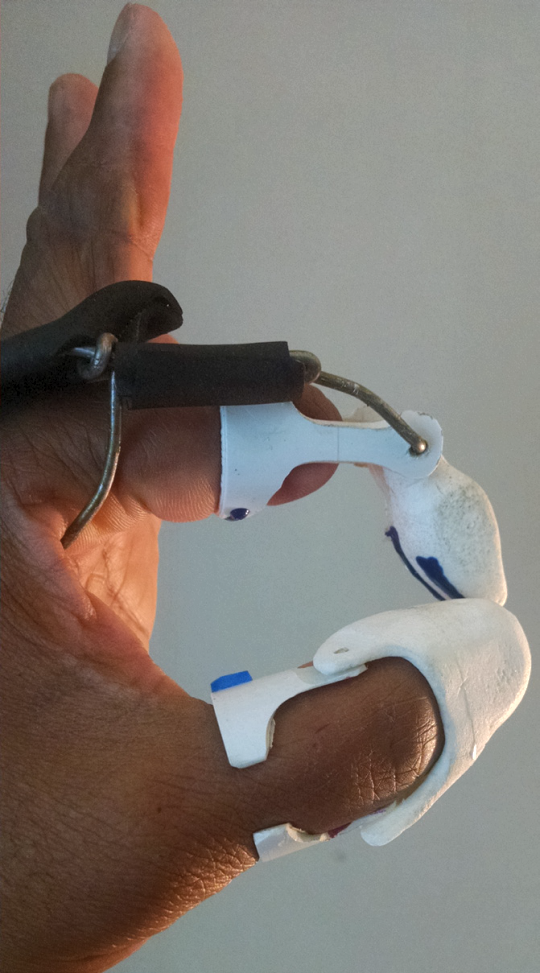 Local inventor Brian Jordan is working on building prototypes of prosthetic fingers to replace his own lost in an accident and help others who have suffered amputation.
Local inventor Brian Jordan is working on building prototypes of prosthetic fingers to replace his own lost in an accident and help others who have suffered amputation.HOLLYWOOD, Md.—Four years ago Leonardtown resident Brian Jordan had a catastrophic accident in which he lost portions of several of his fingers but it only inspired him to find an answer to a new problem in his life.
A navy veteran and engineer, he quickly got to work on assembling a prosthetic finger that would restore much of the dexterity he lost when a mishap with a table saw cut them off.
Now he has found help in a big way by partnering with a branch of the University of Maryland—the MakerBot Innovation Center—to make more advanced prototypes for smaller prosthetics.
“They’re helping me with the design,” Jordan told The County Times. “They’re 3D printing some prototypes and we hope to have a finished product at the end of the summer.”
Jordan’s prototypes resemble a skeletonized, jointed finger that fits over the remnant of his natural finger; with the 3D printing technology they can now rapidly create new prototype designs to see which works better.
The computer design and engineering available at the Makerbot labs also made it easier to predict how a particular prototype would work before it was actually manufactured.
“It’s more advanced,” Jordan said of the technology he now has access to. “You can custom make the design for whoever needs to use it.” Jordan’s quest really began when he consulted with doctors shortly after his injury who told him they would teach him to use what was left of his hand rather than find some way to provide a prosthetic.
Jordan said he found that their may have been a demand for smaller sized prosthetics—like a finger or a thumb—but there was no real supply that he could find.
He decided not to settle for a diminished hand and the partnership with the University of Maryland has brought him even closer to realizing his goal.
“We’re looking for a prosthetic that is strong, robust and actually dexterous,” Jordan said. “We’re more than 50 percent there to where we want to be.
“I want a nice solid product that’s flawless.”
Anthony Ingelido, director of the labs at the university, said when he first met Jordan he talked with him for about three hours and became intrigued by his concept goals.
“The crux of the technology he developed is very powerful,” Ingelido said. “It’s effective and simple.
“I really like what he was working on and his personal story. He seems to genuinely be invested in the project and helping folks out.”
For more local news stories, visit the County Times newspapers online at ct.somd.com


